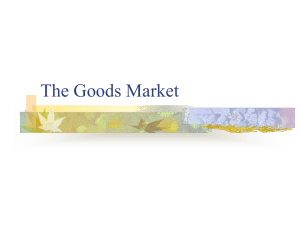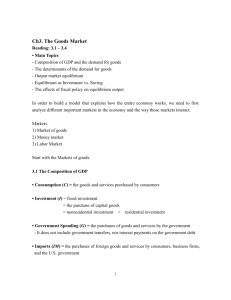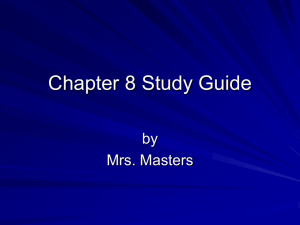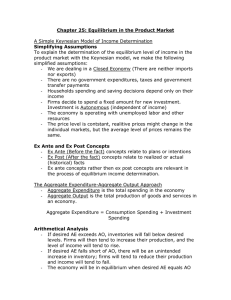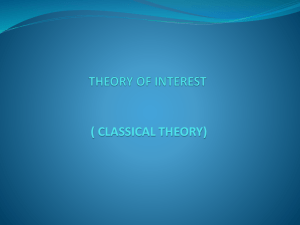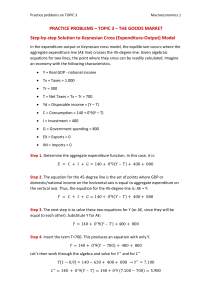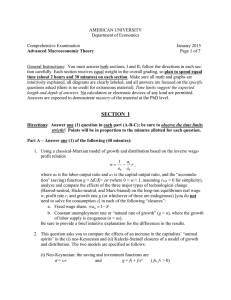Answers to Quiz #4
advertisement
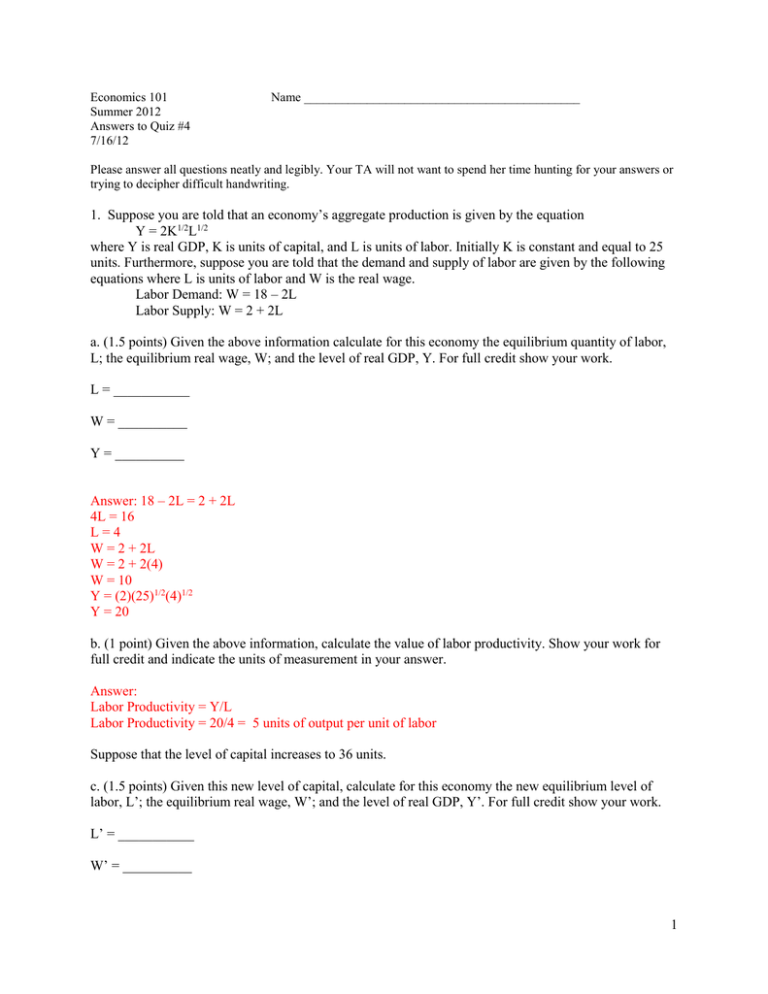
Economics 101 Summer 2012 Answers to Quiz #4 7/16/12 Name ____________________________________________ Please answer all questions neatly and legibly. Your TA will not want to spend her time hunting for your answers or trying to decipher difficult handwriting. 1. Suppose you are told that an economy’s aggregate production is given by the equation Y = 2K1/2L1/2 where Y is real GDP, K is units of capital, and L is units of labor. Initially K is constant and equal to 25 units. Furthermore, suppose you are told that the demand and supply of labor are given by the following equations where L is units of labor and W is the real wage. Labor Demand: W = 18 – 2L Labor Supply: W = 2 + 2L a. (1.5 points) Given the above information calculate for this economy the equilibrium quantity of labor, L; the equilibrium real wage, W; and the level of real GDP, Y. For full credit show your work. L = ___________ W = __________ Y = __________ Answer: 18 – 2L = 2 + 2L 4L = 16 L=4 W = 2 + 2L W = 2 + 2(4) W = 10 Y = (2)(25)1/2(4)1/2 Y = 20 b. (1 point) Given the above information, calculate the value of labor productivity. Show your work for full credit and indicate the units of measurement in your answer. Answer: Labor Productivity = Y/L Labor Productivity = 20/4 = 5 units of output per unit of labor Suppose that the level of capital increases to 36 units. c. (1.5 points) Given this new level of capital, calculate for this economy the new equilibrium level of labor, L’; the equilibrium real wage, W’; and the level of real GDP, Y’. For full credit show your work. L’ = ___________ W’ = __________ 1 Y’ = __________ Answer: There is no change in the labor market, so L = L’ = 4 and W = W’ = 10. Y’ = (2)(36)1/2(4)1/2 Y’ = 24 d. (1 point) Given the new level of capital, what is the value of labor productivity? Show your work for full credit. Answer: Labor Productivity’ = Y’/L’ Labor Productivity’ = 24/4 = 6 units of output per unit of labor e. (2 points) In the space below draw a diagram representing labor market equilibrium and the aggregate production function for each level of capital. In your drawing identify L, L’, W, W’, Y, and Y’. In addition illustrate and label labor productivity in your drawing. Label your diagram carefully and completely. Answer: 2 2. Consider the loanable funds market for a closed economy that is initially operating with a balanced government budget (that is, government saving is initially equal to zero). a. (1 point) Holding everything else constant, the government increases its spending. For each of the following variables determine whether the variable increases, decreases, remains constant, or is indeterminate given this change in government spending. i. The interest rate _________________________________________________________ ii. The level of private investment ____________________________________________ iii. The level of private savings _______________________________________________ iv. The level of government savings ___________________________________________ Answer: Interest rate will increase Investment will decrease Private saving will increase Government saving will decrease b. (1 point) Return to the initial situation. Holding everything else constant, this economy opens to trade and imports more than it exports. For each of the variables determine whether the variable increases, decreases, remains constant, or is indeterminate given this change. i. The interest rate _________________________________________________________ ii. The level of private investment ____________________________________________ iii. The level of private savings _______________________________________________ iv. The level of government savings ___________________________________________ Answer: Interest rate will decrease Investment will increase Private saving will decrease Government saving will have no change 3 c. (1 point) Return to the initial situation. Holding everything else constant, this economy simultaneously opens to trade and exports more than it imports while the government of this economy increases its spending. For each of the variables determine whether the variable increases, decreases, remains constant, or is indeterminate given these changes. i. The interest rate _________________________________________________________ ii. The level of private investment ____________________________________________ iii. The level of private savings _______________________________________________ iv. The level of government savings ___________________________________________ Answer: Interest rate will increase Investment will decrease Private saving will increase Government saving will decrease 4

